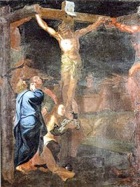

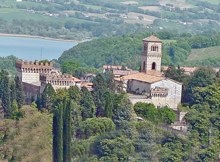
The original monastery here, which is variously reported to have belonged to the Benedictines, the Dominicans and the Augustinians, was abandoned in 1413.
In 1465, Cardinal Berardo Eroli received permission from Pope Paul II to restore the church and rebuild the convent for the Observant Franciscans. He mandated that a group of friars should move here from the Convento di San Paolo inter Vineas, Spoleto, which he had also founded. The friars were reluctant because the opulence of San Girolamo was inconsistent with their vocation, but Cardinal Eroli was insistent. A group of friars from San Paolo duly moved here in ca. 1471 and remained until the suppression of 1860.
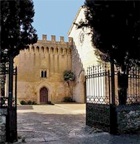
The Commune bought the complex in 1975, but it subsequently fell into disrepair.
Art from the Church
The following works, which were removed from San Girolamo after the suppression of 1860, are now in the Pinacoteca.
Coronation of the Virgin (1486)
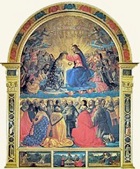
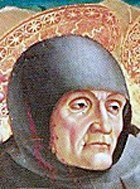
The altarpiece was painted in the Ghirlandaio workshop in Florence. It was on the high altar of San Girolamo until 1781, when it was moved to the wall of the apse. It was taken to Palazzo Comunale in 1871.
In the upper register of the main panel, Christ crowns the Virgin, surrounded by angels, many of whom play musical instruments, together with patriarchs and prophets. 22 saints in the lower register meditate on the scene The saints include:
-
✴St Francis, who kneels in prayer (at the centre) with the stigmata clearly visible in his hands and side;
-
✴St Jerome (the titular of the church), who wears a red cardinal's cope and looks out at the viewer (centre right);
-
✴St Antony of Padua, who kneels barefoot to the right of St Jerome;
-
✴St Bonaventure, who had been canonised in 1482 (centre left). Like St Louis of Toulouse to his left, he wears a sumptuous cope (indicating ecclesiastical office) over his Franciscan habit; and
-
✴St Bernardino of Siena, behind and immediately to the left of St Francis.
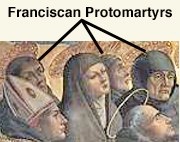
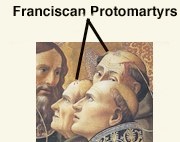
The figure behind St Bonaventure, who wears a black hood and has a head wound, is almost certainly St Berardo (the name saint of Cardinal Eroli, also illustrated above), one of the five Franciscan protomartyrs, who had been canonised in 1481. The other four protomartyrs, who also sport head wounds, are included in the composition (two on the extreme right and two to the left of St Berardo).
Three standing saints are depicted on each side of the frame. The predella depicts:
-
✴the stigmatisation of St Francis;
-
✴the Pietà; and
-
✴St Jerome in the dessert.
Madonna and Child with angels and saints (ca. 1470)
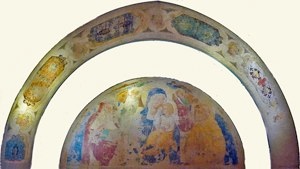
This damaged fresco, which came from the lunette of a portal of the church, is exhibited in together with the decorative frescoed cornice of the composition. The main scene, which depicts the Madonna and Child with SS Francis and Jerome, is attributed to Pierantonio Mezzastris. Cardinal Berardo Eroli, who financed the restoration of San Girolamo in 1465-71, probably commissioned these frescoes, at the same time that he commissioned those in what is now the Eroli Chapel, San Francesco.
St Antony of Padua and the Bl Bernardino (15th century)
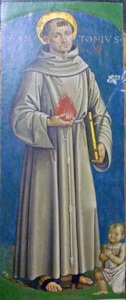
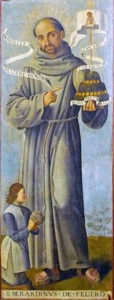
These altarpieces are attributed to a follower of Pier Matteo d’ Amelia.
-
✴St Antony holds a flame that symbolises his eloquence; and
-
✴the Blessed Bernardino of Feltro carries his usual attribute, the symbol of the Monte di Pietà.
Scenes from Via Crucis (1728-9)
